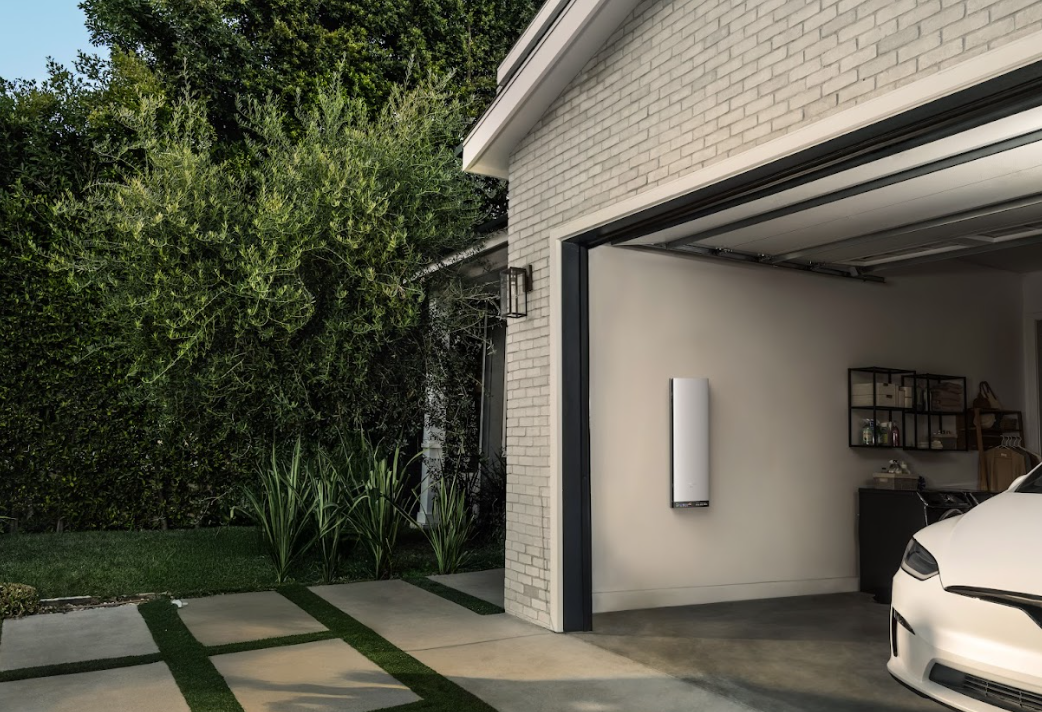How to Connect a Gas Generator to Your Home Battery System Safely
- What Parts Enable a Safe Gas Generator to Battery Connection?
- Which Transfer Switch Fits a Gas Generator to Battery Systems?
- How Should You Handle Neutral and Grounding for Safety?
- Where Should You Place the Gas Generator and Inlet Box?
- What Specs Matter in a Gas Generator for Home Backup?
- How Do You Commission and Test a Generator to Battery Setup?
- How to Connect a Gas Generator Safely Today?
- FAQs
A whole-home battery carries the house through short outages with quiet power. Multi-day storms need fuel to keep the battery charged and the backup panel alive. This guide focuses on connecting a gas generator to a battery system in the US with safe practices, clean handoffs, and predictable charging for large home storage users.
What Parts Enable a Safe Gas Generator to Battery Connection?
Before any wiring, align purchasing and drawings. The goal is safely connecting a generator to a battery system that supports whole-home backup without surprises.
Listed transfer equipment sized to service amperage and 120/240 split-phase
Outdoor-rated conductors or a listed cord set with strain relief and weather protection
Permanent labels for inlet, transfer equipment, backed-up panel, and fuel shutoff
Carbon monoxide alarms on every level, one near bedrooms
A single-line diagram showing meter, main disconnect, transfer device, inverter and battery system, backed-up load panel, generator inlet, and grounding
Keep a job note on the plan: neutral method, bonding point, conductor sizes, and the test sequence for connecting the gas generator to the battery system.
Which Transfer Switch Fits a Gas Generator to Battery Systems?
Transfer equipment prevents backfeed and defines how the gas generator interacts with the inverter and the utility. Two decisions come first: whole-home coverage or a backed-up subpanel, and manual interlock or automatic transfer switch.
| Option | Best Use | Strengths | Plan For |
| Manual Interlock + Subpanel | Cost control with clear operation | Simple, reliable, easy to service | Manual steps during outages |
| Service-Rated Automatic Transfer Switch | Full-home convenience | Fast transfer and clean isolation | Higher cost, neutral switching planning |
Confirm listing, withstand, and closing ratings, and the neutral strategy. Write those fields in the drawing. This keeps connecting the gas generator to the battery system on schedule and reduces change orders.
How Should You Handle Neutral and Grounding for Safety?
Neutral and grounding determine voltage stability and trip behavior when a gas generator supports a home battery. Treat the approach as a design decision, then verify it during commissioning.
- Step 1 — Make it a design decision and plan to verify.
Neutral and grounding set voltage stability and trip behavior; decide the method first and plan to prove it during commissioning. - Step 2 — Keep a single neutral-to-ground bond and choose its location.
Keep only one neutral-to-ground bond active during generator operation. If the transfer device switches the neutral, the bond typically lives in the gas generator. If the neutral does not switch, the bond usually remains at the service equipment. - Step 3 — Tie into the grounding electrode system.
Tie into the existing grounding electrode system with the listed means. - Step 4 — Record and label the method.
Record the chosen method on the job sheet and place a label on the transfer equipment that states “Neutral Switching Method and Bonding Point.” - Step 5 — Add verification checks to the test plan.
Add checks for neutral continuity and ground impedance to the test plan.
With this in place, safely connecting a generator to a battery system becomes repeatable.
CO Safety Callout: Run the gas generator outdoors in open air, away from doors, windows, and vents. Install carbon monoxide alarms indoors on each level.
Where Should You Place the Gas Generator and Inlet Box?
Placement affects safety, noise, and daily use.
- Generator placement: Run the gas generator outside on a stable pad with exhaust aimed away from people and air intakes.
- Inlet box: Mount the inlet box on an exterior wall with a weather cover at a practical height above splash and snow.
- Run length and protection: Keep the run from the generator to the inlet short and protected.
- Conductor routing: Route conductors in outdoor-rated raceway or use a listed cord that stays off the ground.
- Never backfeed: Never backfeed through an appliance receptacle.
- Labels and operating card: Clear labels and a simple operating card help the household set up the gas generator for home backup at night or in heavy rain.


What Specs Matter in a Gas Generator for Home Backup?
Large home storage needs steady charging and clean power. Select a gas generator for home backup that cooperates with your inverter window and typical loads.
Continuous power sizing: Aim continuous kilowatts at the sum of priority loads plus the battery charge target, and leave headroom for compressor starts.
Output topology: Choose a true 120/240-volt split-phase output for residential panels.
Power quality: Favor tight voltage and frequency regulation with low total harmonic distortion, so electronics and chargers stay stable.
Inverter cooperation: Match the generator to the inverter’s voltage and frequency window and the home’s typical loads.
Maintenance and testing: Keep a maintenance kit ready and test under load monthly.
These choices make connecting a gas generator to a battery system productive when the grid is down.
For people planning whole-home storage, EcoFlow OCEAN Pro aligns with these specs. It supports generator pairing and scales from 10 kWh to 80 kWh. In practice, this makes sizing the transfer equipment and setting a charge target for connecting a gas generator to a battery system straightforward, while helping shorten generator run time when the sun returns.
How Do You Commission and Test a Generator to Battery Setup?
Commissioning turns parts into a reliable system. Use three short passes and capture records that an inspector and a homeowner can understand.
- Dry Run: Open the utility, operate the transfer equipment, start the gas generator, and verify correct voltage at the inlet and at the backed-up panel. Confirm the neutral strategy and the selected bonding point.
- Live Run: Bring up lights and networking, then add refrigeration and other priority loads. Enable battery charging from the gas generator and watch voltage, frequency, and charge current for a steady window. Record transfer time and temperatures at the enclosure.
- Closeout Pack: Photograph labels, terminations, and nameplates. File the single-line diagram, listing sheets, torque log, and the test record. In US jurisdictions, follow the local authority process using that packet. Good records lock in safely connecting a generator to a battery system and help future service.


How to Connect a Gas Generator Safely Today?
A large home storage project succeeds when the plan is simple and every step is visible. Define the backed-up loads and the battery charge target in watts. Select transfer equipment and write the neutral plan on the drawing so the crew and the inspector read the same line. Place the inlet where setup is quick in bad weather. Install labels and carbon monoxide alarms before the first test. Run a dry pass, then a live pass, and save the numbers. With the right gas generator, the battery charges on schedule, refrigeration stays cold, and the backed-up panel behaves the same way every time. That is connecting a gas generator to a battery system with confidence and care, and it is the standard a whole-home battery deserves.
FAQs
Q1. How large should a gas generator be when charging a home battery?
Size for the sum of priority loads and the inverter’s target charge power, then add headroom for motor starts. Set an AC charge-current limit on the inverter so the generator stays inside its continuous kW rating. Use 120/240-V split-phase and verify nameplate values before ordering.
Q2. Can sensitive electronics stay on while the battery charges from a generator?
Yes, with clean power and settings. Choose low-THD output, keep frequency near 60 Hz, and cap charge current to stabilize voltage. Stagger large loads, enable surge protection, and watch for lamp flicker or UPS alarms. If you see instability, lower the charge limit and retest under a typical household load.
Q3. Do I need load shedding when pairing a gas generator with a home battery?
For homes with HVAC, well pumps, ovens, or EV chargers, add load-management relays or ATS load control. Assign priorities: refrigeration and heating first, EV charging paused during generator operation. Label the backed-up panel accordingly. Test each shed event during commissioning and record results in the homeowner’s operating card.